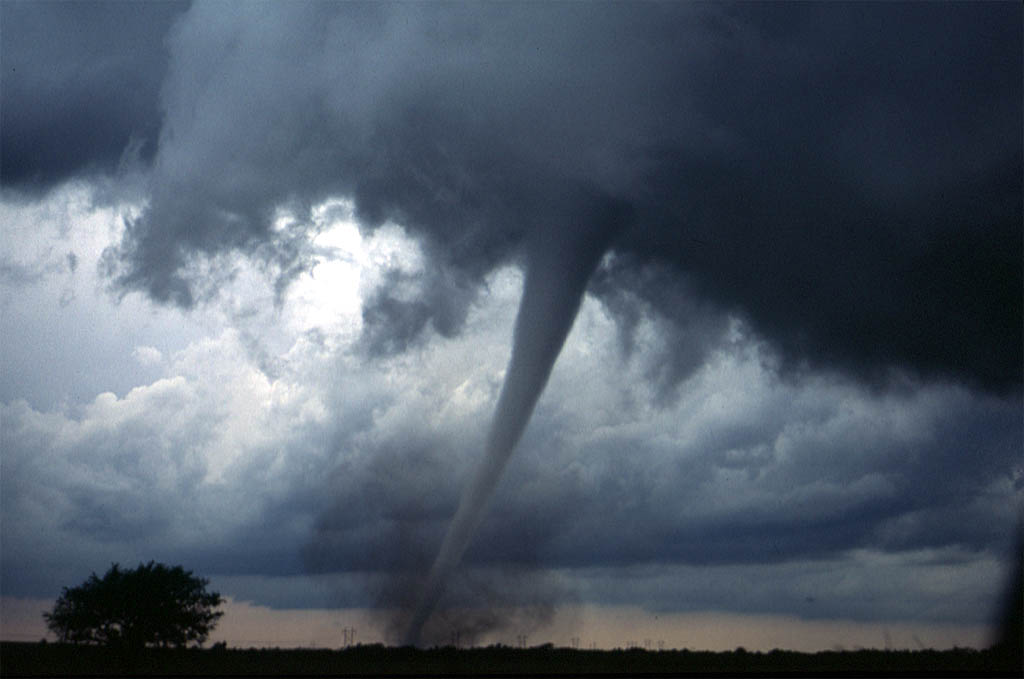 With the arrival of spring, we all look forward to the warmer weather in the coming months. When the temperatures rise, it also increases the possibility of severe storms and tornadoes.
With the arrival of spring, we all look forward to the warmer weather in the coming months. When the temperatures rise, it also increases the possibility of severe storms and tornadoes.
Severe thunderstorms with lightning, heavy rains and high winds and possible tornadoes can cause fatalities and devastate a neighborhood in seconds. A tornado will begin as a rotating, funnel-shaped cloud that extends from a thunderstorm to the ground with whirling winds that can reach 300 miles per hour. Damage paths can be in excess of one mile wide and 50 miles long. Some tornadoes are clearly visible, while rain or nearby low-hanging clouds obscure others. A cloud of debris can mark the location of a tornado even if a funnel is not visible. Tornadoes generally occur near the trailing edge of a thunderstorm. It is not uncommon to see clear, sunlit skies behind a tornado.
According to the National Weather Service, Wisconsin averages 23 tornadoes each year. Last year, there were 23 confirmed tornado touchdowns in the state. While most tornadoes were either EF0 or EF1, the state did record an EF3 on May 16, 2017. The tornado followed an 83-mile path across Polk, Barron, Rusk, and Price counties, killing one person and causing widespread damage. Madison had a tornado occur with no warning on October 7 last year — that tornado was rated an EF-0, had wind speeds of 80 mph, was up to 100 yards wide. It traveled almost 10 miles before dissipating.
It is important to understand the statements made by the National Weather Service and local news media in describing current weather conditions during the summer months.
- Advisory – is the in between a WATCH and WARNING The expected weather condition has a pretty good chance of occurring, even a likely chance of occurring, but typically an advisory is used for “less” severe type of weather conditions. A Wind Advisory might be issued or a Freezing Rain Advisory issued instead of a High Wind Warning or an ice Storm Warning.
- Watch – means a “chance” this condition will happen and usually covers a large geographical area for a lengthy time period of time.
- Warning – means the said weather is already occurring or is likely to occur and to take proper protective measure Warnings are usually issued for much smaller geographical areas and usually for shorter, more definite time periods.
It is important to remain aware of the weather conditions in the summer to take the proper actions in the event of severe summer weather. Following specific safety tips will ensure that you will not be caught by surprise:
- Listen to NOAA Weather Radio or to commercial radio or television newscasts for the latest information.
- In any emergency, always listen to the instructions given by local emergency management officials.
- Be alert to changing weather conditions. Look for the following danger signs:
- Dark, often greenish sky
- Large hail
- A large, dark, low-lying cloud (particularly if rotating)
- Loud roar, similar to a freight train
- If you see approaching storms or any of the danger signs, be prepared to take shelter immediately.
If you are in an area declared for a tornado warning, seek shelter immediately! Go to a pre-designated area such as a safe room, basement, storm cellar, or the lowest building level. If you are caught outside with no shelter, lie in an area noticeably lower than the level of the roadway and cover your head with your arms and a blanket, coat or cushion. Keep in mind — most injuries from severe storms are associated with high winds are from flying debris, so remember to protect your head.
